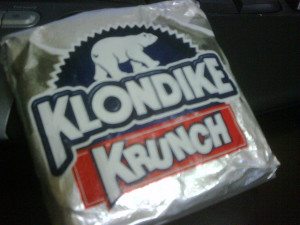As mentioned in Trade Dress Protection, when asserting trade dress infringement or unfair competition, the first prong of the three-prong test requires that the plaintiff show “the inherent distinctiveness or secondary meaning of its trade dress.” In Wal-Mart Stores Inc. v. Samara Brothers, Inc., the Supreme Court put to rest the issue of whether a product’s configuration or design can or should be deemed to be inherently distinctive by stating that a product design should never be found to be inherently distinctive. 529 U.S. 205, 214 (2000). While product design requires showing secondary meaning, a higher burden, as discussed in Secondary Meaning of Trade Dress, product packaging trade dress claims can survive if the trade dress is inherently distinctive. Unlike secondary meaning, the inherent distinctiveness test allows the first manufacturer or merchant who comes out with an inherently distinctive trade dress to claim protection.
Does Not Require a Showing of Secondary Meaning
In Two Pesos, Inc. v. Taco Cabana, Inc., the Supreme Court held that if a trade dress is inherently distinctive, it can be protectible under § 43(a) without a showing that it has acquired secondary meaning. 505 U.S. at 771, 775 (1992). However, the Court did not specify what inherently distinctive meant and did not recognize any sort of test to help establish inherently distinctive. Therefore, there are many different tests being used to determine inherently distinctive trade dress.
The Traditional Trademark Test
Determining inherent distinctiveness in a trademark case involves a clear application of a universally accepted rule; however, determining inherent distinctiveness in trade dress case is more difficult because jurisdictions vary on the application of tests. The traditional trademark test was applied in Abercrombie & Fitch Co. v. Hunting World, Inc. where the court applied a trademark analysis that classified trademarks into five categories running in a continuum: (1) generic, (2) descriptive, (3) suggestive, (4) arbitrary, or (5) fanciful. 537 F.2d 4, 189 U.S.P.Q. (BNA) 759, 189 U.S.P.Q. (BNA) 769 (2d Cir. 1976). “The latter three, suggestive; arbitrary; and fanciful, are always considered inherently distinctive because their intrinsic nature serves to identify a particular source of a product, and the generic and descriptive categories have little or no distinctiveness.” Id.
The Seabrook Test
As created in Seabrook Foods, Inc. v. Bar-Well Foods Ltd., the Seabrook test is a three-part test that is used by courts and asks whether: “(1) the design or shape was a common, basic shape or design; (2) design or shape was a unique or unusual in a particular field; and (3) the design or shape was a “mere refinement of a commonly-adopted and well-known form of ornamentation for a particular class of goods viewed by the public as a dress or ornamentation for the goods.” 568 F.2d 1342, 1344 (C.C.P.A. 1977).
Application of Both Tests
For example, in the case of AmBrit, Inc. v. Kraft, Inc., where Islay asserted trade dress infringement of its Klondike bar, which has been wrapped in “pebbled foil featuring the colors silver, blue and white since the 1940’s” and the wrapper “has featured a 3 x 3 inch panel of silver, white, and blue, the words ‘Islay’s’ and ‘Klondike’ and the figure of a polar bear,” against Kraft’s Polar B’ar, a 3 x 3 pebbled silver foil panel with a white polar bear standing on all fours contained within a colored triangle in the bottom right corner, the court first utilized the traditional trademark test. 812 f.2d 1531, 1533-34 (11th Cir. 1986) 1 U.S.P.Q.2d 1161. The court stated, “The overall appearance of the Klondike trade dress and of its constituent elements is arbitrary or suggestive. The trade dress does not describe the ice cream product, rather it suggests to the consumer the coldness of the product. Such trade dress is inherently distinctive under Section 43(a).” Id. at 1531, 1537. The court went on to evaluate the Klondike’s packaging using three lines of inquiry set out by the court in Seabrook: (1) whether Klondike’s shape or design was common; (2) whether Klondike’s shape or design was unique in the ice cream bar field; and (3) whether Klondike’s shape or design was merely a refinement of an already well-known form of ornamentation for ice cream goods. See Id. at 1536 (citing Brooks Shoe Mfg. Co. v. Suave Shoe Corp., 716 F.2d 854 (11th Cir. 1983) (quoting Seabrook, 568 F.2d at 1344 (C.C.P.A. 1977))). The court answered each of the three questions asserted in the negative and held that the Klondike bar was worthy of trade dress protection. Id. at 1536-37.
For more information about the secondary meaning of trade dress, contact Revision Legal’s trademark attorneys through the form on this page or call (855) 473-8474.





